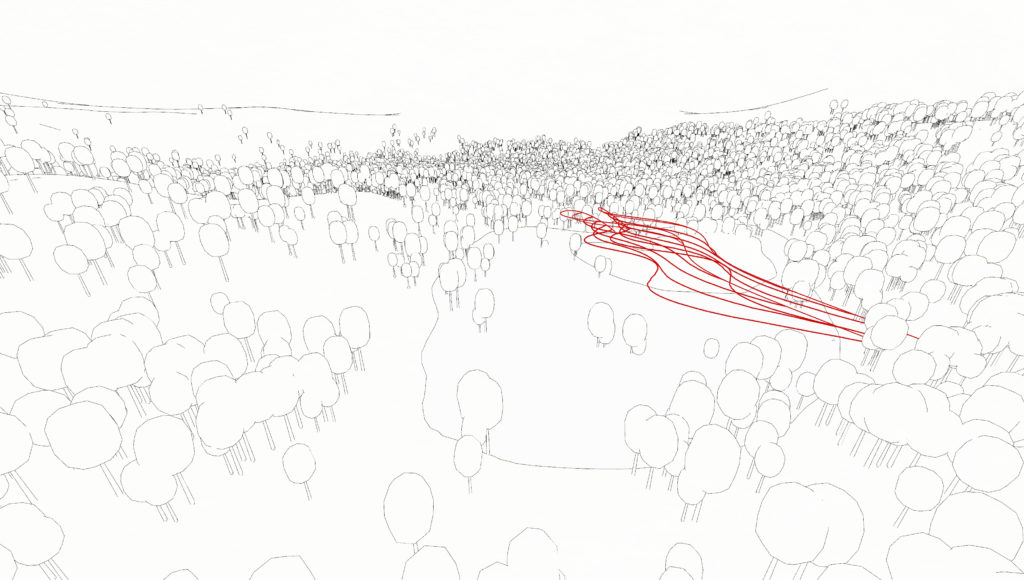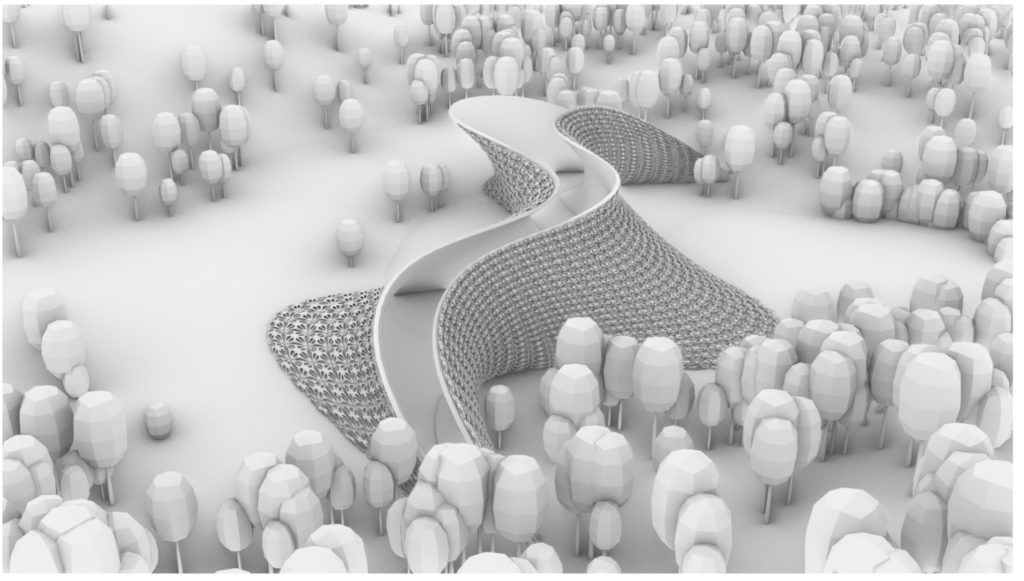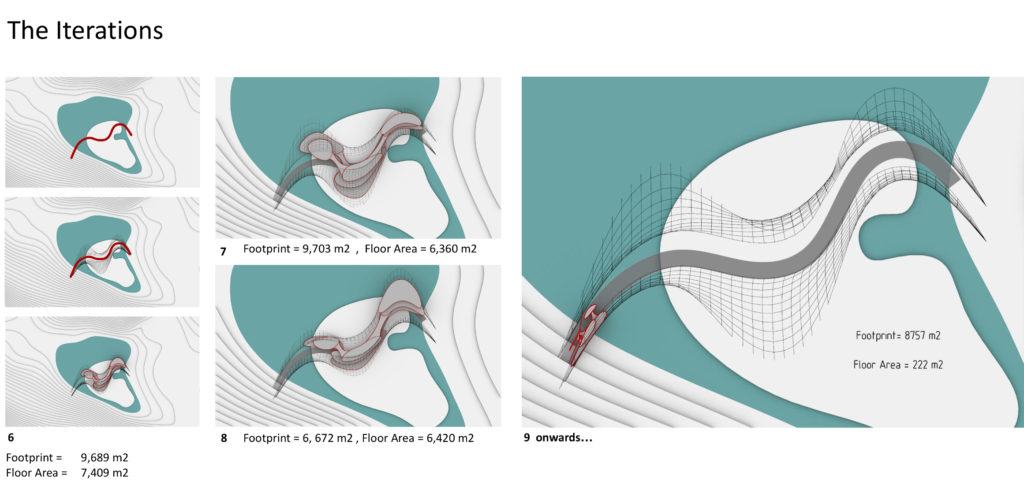
The Concept
Extinction plays an important role in the evolution of life because it opens opportunities for new species to emerge.
The project represents the evolution of species starting from the see, then adapting and moving inland, and later taking to the sky.

Form Finding and Iterations
The form is derived from the main path going through the three main zones; See, Land, and Sky. The process starts with the surface boundary curves. These curves are formed by the program and context forces. The building skin is a minimal surface that is relaxed in between the boundary curves. The skin adjusts according to the iterations of the boundary curves.

The Envelope
One set of Nurbs curves are lifted, and a minimal surface is generated using Kangaroo between the boundary curves.

The Floor Slabs

We’ve crafted an interactive architectural skin for the museum, seamlessly blending with nature. This living facade not only merges the building with its environment, inviting visitors into a contemplative journey amid life’s beauty. Our design is rooted in careful sun-hour analysis, influencing a tailored paneling system. This system categorizes zones with distinct designs, optimizing aesthetics and strategically placing plant species where they thrive best based on their sunlight preferences. This synthesis creates a harmonious fusion of architecture, nature, and sunlight, enhancing both the visual appeal and ecological balance of the space.








